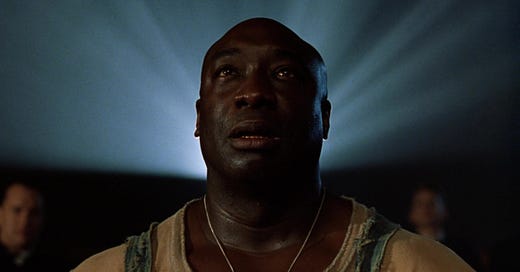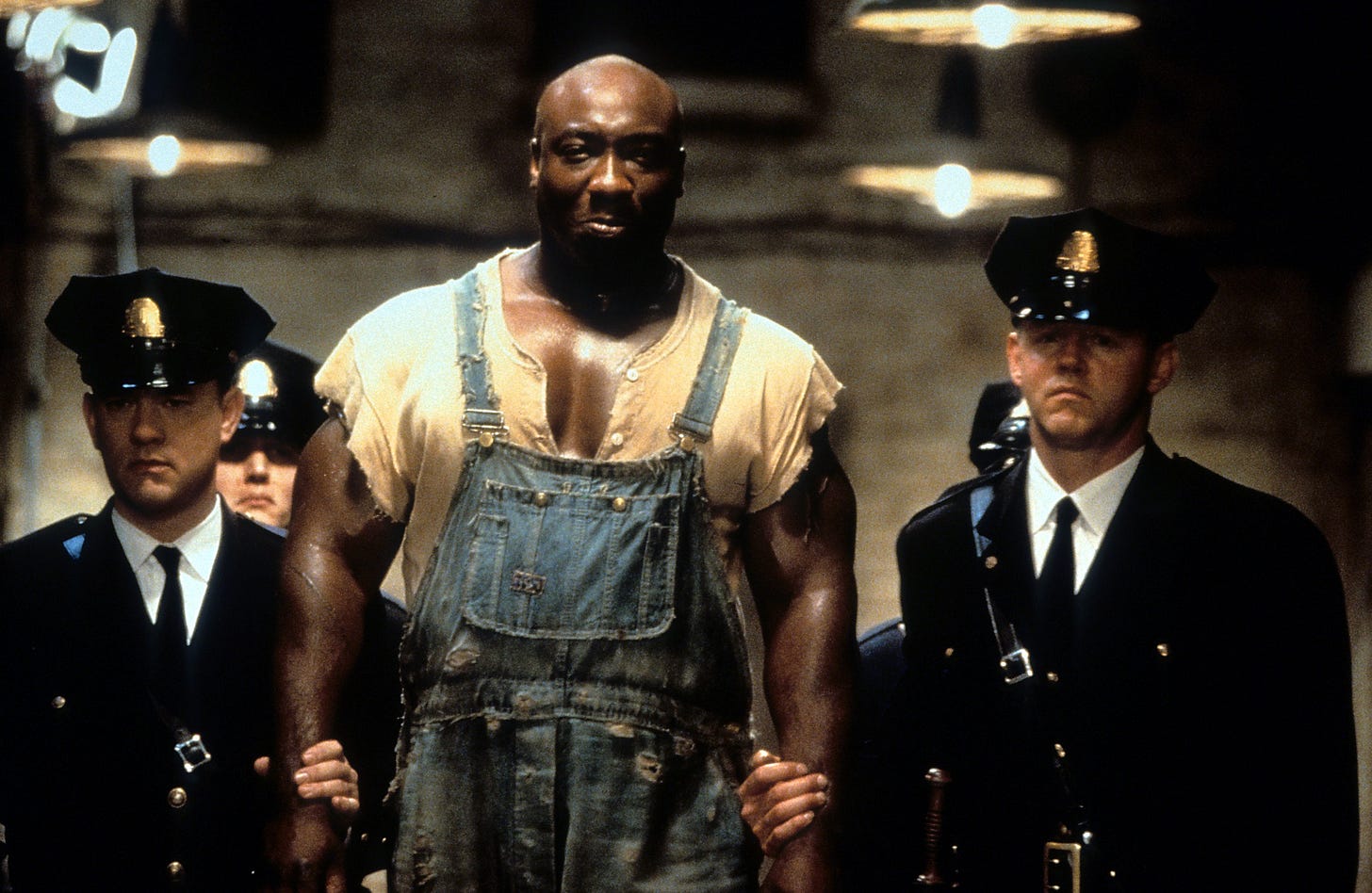The Following Contains Spoilers!
As we come out of the season of Lent, it is the perfect time to discuss The Green Mile, a film which alludes heavily to the crucifixion. This film also addresses atonement and asking for forgiveness for our sins.
Many of the characters in The Green Mile are archetypal figures. John Coffey’s attorney is representative of Pontius Pilate, sending Coffey off to his death and washing his hands of the responsibility. The four guards represent the four soldiers who crucified Jesus. Percy represents all those who gleefully inflicted pain and suffering on Jesus leading up to his death. There are two other prisoners that are executed in the film, characterizing the two thieves crucified next to Jesus. Two characters exemplify the supernatural forces of good and evil present in the story. The first is Wild Bill, a Satanic demon-like figure who radiates evil and delights in violence, chaos, and death. The other, obviously, is John Coffey.
For the first hour of the film, the plot is seemingly a simple tale about death row inmates and the prison guards that watch over them. That is when John Coffey, seeing how much pain Paul is in due to his UTI, calls Paul over to his cell. At that moment the story becomes something else entirely. John performs his first miracle and heals Paul. His next miracle comes when he resurrects Mr. Jingles after Percy crushes him. John’s final miracle is the healing of Melinda’s brain tumor. This scene feels very much like an exorcism; the room has a horrible stench, Melinda hurls obscenities at John, and the whole house is shaken as John draws out her affliction. Every time that John heals someone, he expels flies out of his mouth. The flies represent evil as Beelzebub, one of the princes of Hell is commonly known as “Lord of the Flies”. The one time in the film that John does not use his gift to heal, he uses it to punish the evil deeds of Percy and Wild Bill.
John is the “Christ-like” character in The Green Mile. Stephen King intentionally made John’s initials JC to highlight this parallel. He seems at times like a prophet, possessing a knowing prescience. He knows that Paul has a bladder infection, he knows that Paul is going to ask if he wants to be set free before he even asks the question, and he is aware that the guards are taking him to the warden’s house to heal Melinda without them telling him. Another important similarity between John Coffey and Christ is his ability to take the pain and suffering of evil and sin unto himself. When Del rides the lightning, John takes as much of the pain onto himself as he can. When Wild Bill grabs his arm, John is visibly in pain due to the horrific evil residing within Bill. When he walks into the execution room, he stops dead in his tracks because of the hate that he can feel coming from the spectators. His monologue to Paul perfectly describes the weight of this power:
“I’m tired boss, tired of being on the road, lonely as a sparrow in the rain. I’m tired of never having me a buddy to be with, to tell me where we’s goin’ to or comin’ from or why. Mostly, I’m tired of people being ugly to each other. I’m tired of all the pain I feel and hear in the world every day. They’s too much of it. It’s like pieces of glass in my head all the time.”
There is a lot of symbology around John regarding the battle between light and darkness. The first question that John asks Paul when he arrives on the Green Mile is whether or not they leave the light on because John is afraid of the dark. Whenever he performs a miracle, there is either a light emitting from his mouth, or the lights in the prison begin to shine very brightly until they blow. When Harry goes to put the cover on John’s head, he begs Paul not to put him in the dark. And the moment that John dies, the lights in the execution room explode, shrouding the room in darkness because the light that John carried inside himself has been ripped out of the world. The greatest and most famous image from the film is when John is watching Fred Astaire sing Cheek to Cheek in Top Hat. The light from the projector casts a halo around John’s head, indicating the divine grace shining forth from him. This image is accompanied by the line, “Why they’s angels, angels just like up in Heaven.”
The clearest example of Christian symbology in The Green Mile, is the Mile itself. Death row, or “The Green Mile” is meant to represent Purgatory. It is the punishment for crimes committed by the inmates. Paul suffers a similar trial after letting John Coffey ride the lightning. He is forced to live long past his time, having to see all of his loved ones die before him. It was Paul’s fear coming to fruition, his atonement for killing one of God’s miracles. This is meant to represent Purgatory, our time of atonement where we face judgement for our sins and our souls are cleansed and purified before we can enter God’s Kingdom.
“We each owe a death - there are no exceptions - but, oh God, sometimes the Green Mile seems so long.” - Paul Edgecomb






